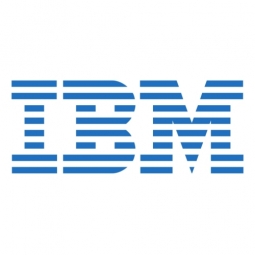公司规模
Large Corporate
地区
- Asia
国家
- Afghanistan
产品
- IBM i2 Analyst’s Notebook
技术栈
- Data Analysis
实施规模
- Enterprise-wide Deployment
影响指标
- Digital Expertise
- Productivity Improvements
技术
- 分析与建模 - 数据挖掘
适用行业
- 国家安全与国防
适用功能
- 物流运输
用例
- 预测性维护
服务
- 数据科学服务
关于客户
本案例研究中的客户是驻扎在阿富汗赫尔曼德省的一支专业军事小组。该小组的任务是收集、分析和传播大量数据,用于在与叛乱分子的战斗中开发人类地形情报。该小组由五个连队组成,下属单位占据各自的行动区域。所涉及的地理区域广阔,涵盖了叛乱分子可以在其中行动的广泛而多样的人口。每个下属单位都将数据传递到情报链上,以便与其他数据融合并进一步利用。
挑战
驻扎在阿富汗赫尔曼德省的军事小组的任务是收集、分析和传播大量数据,用于在与叛乱分子的战斗中开发人类地形情报。该小组由五个连队组成,下属单位占据着各自的行动区域。所涉及的地理区域广阔,涵盖了叛乱分子可以在其中行动的广泛而多样的人口。每个下属单位都将数据传递到情报链上,以便与其他数据融合并进一步利用。以前的数据通道方法无法促进推动情报主导行动所需的情报快速融合。该小组需要一种解决方案,可以提取大量复杂数据进行分析,最大限度地减少重复工作,并最大限度地提供确证。
解决方案
军事团队实施了 IBM i2 Analyst's Notebook 软件,以期在反叛乱行动中充分利用收集到的情报。每个下属单位都输入其收集到的情报,为整个团队每天输入的数百行数据做出贡献,以便进行更深入的分析和利用。i2 Analyst's Notebook 软件可帮助团队融合来自多个来源、不同格式的数据,以便快速分析和利用。i2 Analyst's Notebook 软件可帮助团队将分散的数据转换为有凝聚力的情报图,减少重复工作并促进信息核实和共享。i2 Analyst's Notebook 软件的实施帮助团队识别出可能被忽视的模式,使他们能够识别并故意破坏叛乱活动。
运营影响

Case Study missing?
Start adding your own!
Register with your work email and create a new case study profile for your business.
相关案例.

Case Study
Data Capture for Afghanistan Forces
Electronic equipments on the field of Afghanistan provided information on the status of the vehicle and to identify potential threats surrounding it to the British Force. The monitoring and interpretation of this data requires robust and sophisticated digitization for data capture and communication.
Case Study
Enhancing Security and Compliance in Remitly's Global Money Transfer Service with Fastly
Remitly, an online remittance service, was faced with the challenge of securing its proprietary global transfer network. The company needed a security solution that could meet PCI requirements and protect customers' sensitive transactions through its mobile application. The solution had to be capable of defending against new and emerging attack types without impacting performance. Remitly also had to deal with irregular traffic patterns, such as a sudden spike in account transfers from a small network segment on the Pacific coastline of South America. The company needed to determine in real time whether such traffic indicated an attack or valid requests. A traditional web application firewall (WAF) would not be able to distinguish this traffic, potentially leading to customer frustration if the IP was blacklisted.

Case Study
Major Aerospace Company Automates Asset Management
The O&M division of an aerospace and global security company was using spreadsheets to manually track more than 3,000 assets assigned to students and staff. Maintaining audit trails for this high volume of equipment became increasingly time-consuming and challenging. The chore involved knowing precisely what equipment was on hand, what had been issued, its location and the name of the custodial owner of each item. Every aspect of this task was carried owner of each item. Every aspect of this task was carried out by individuals with spreadsheets. Manually documenting the full lifecycle of each asset added to the burden. This included tracking maintenance requirements and records, incidents and damages, repairs, calibrations, depreciation, and end-of-life data.

Case Study
Securing a Large Data Center in the EMEA Region: An IoT Case Study
A leading data-center operator in the EMEA region, with multiple facilities spanning over 25,000 square meters, faced significant security challenges. The operator experienced interruptions in their internal IT network due to unsupervised work of third-party technicians. Despite having a high-end building control system that provided 24x7 monitoring and control to all the building’s infrastructure, the data center was vulnerable from a cyber perspective as it was connected to the IT network infrastructure. The operator launched an urgent OT cyber security project that included both IT-OT network segmentation and OT network asset mapping and anomaly detection. The main objectives were to harden the security of the server systems, secure the facility’s power supply and server cooling system, strengthen the segmentation between building and operational systems, create a visual OT network map, and set up a system for presenting supply-chain attacks that may threaten the data center through equipment vendors’ maintenance activities.

Case Study
Leveraging Graph Technology for Enhanced Cybersecurity: A Case Study on MITRE's CyGraph
MITRE, a federally-funded, not-for-profit company that manages seven national research and development laboratories in the United States, was grappling with the challenge of managing an influx of cybersecurity data. The constant changes in network environments were impacting the security posture of U.S. government agencies. Intrusion alerts, anti-virus warnings, and seemingly benign events like logins, service connections, and file share access were all potentially associated with adversary activity. The cybersecurity researchers at MITRE needed to go beyond rudimentary assessments of security posture and attack response. This required merging isolated data into higher-level knowledge of network-wide attack vulnerabilities and mission readiness. The challenge was not the lack of information, but the ability to assemble disparate pieces of information into an overall analytic picture for situational awareness, optimal courses of action, and maintaining mission readiness. The team also struggled with fully comprehending a given security environment and mapping all known vulnerabilities.

Case Study
Enhancing Security Precision with IoT: A Case Study of Guardsman Group
Guardsman Group, a leading security company in the Caribbean, faced a significant challenge in maintaining the security of its digital infrastructure. The company provides security equipment, personnel, and systems for various businesses across the region. However, one of its offices experienced a security incident that affected all communications at that location. The existing security tools were not sufficient to provide the necessary protection, and it took hours to identify the source of the issue. This incident highlighted the need for a dynamic solution that could proactively identify threats. The company's primary concern was any disruption to its business, as it manages a significant portion of Jamaica's money and cannot afford for its operations to go down.







